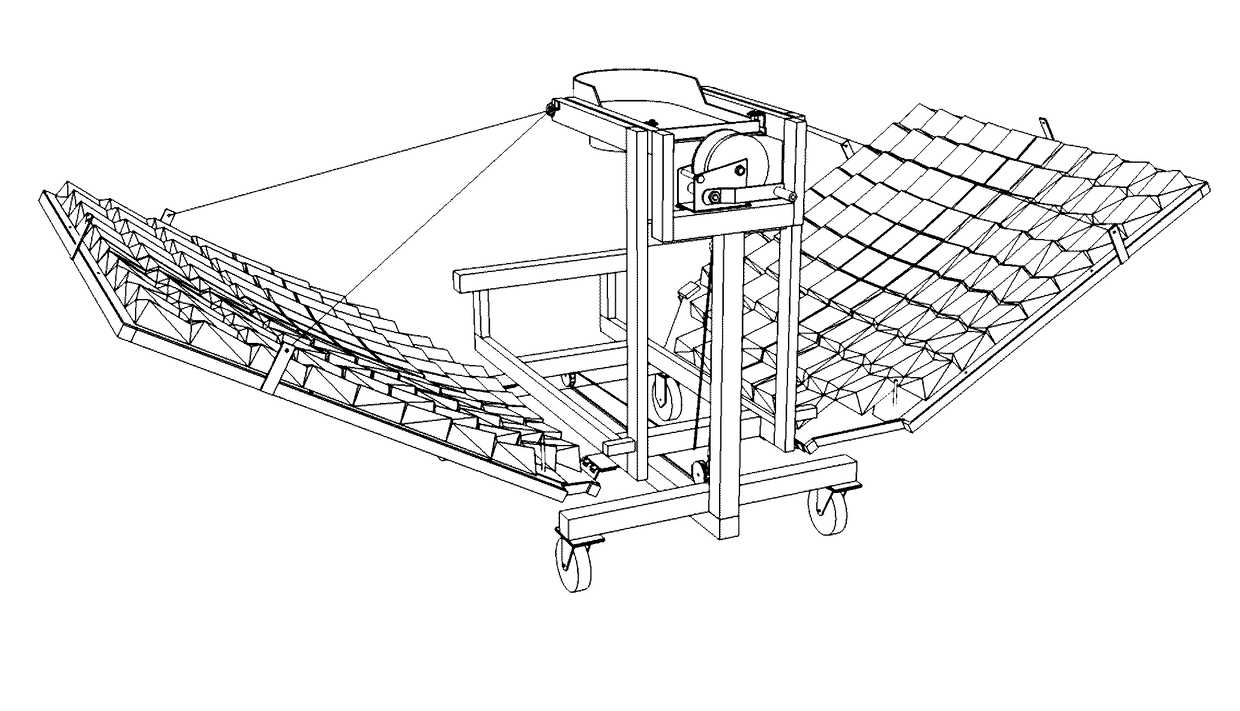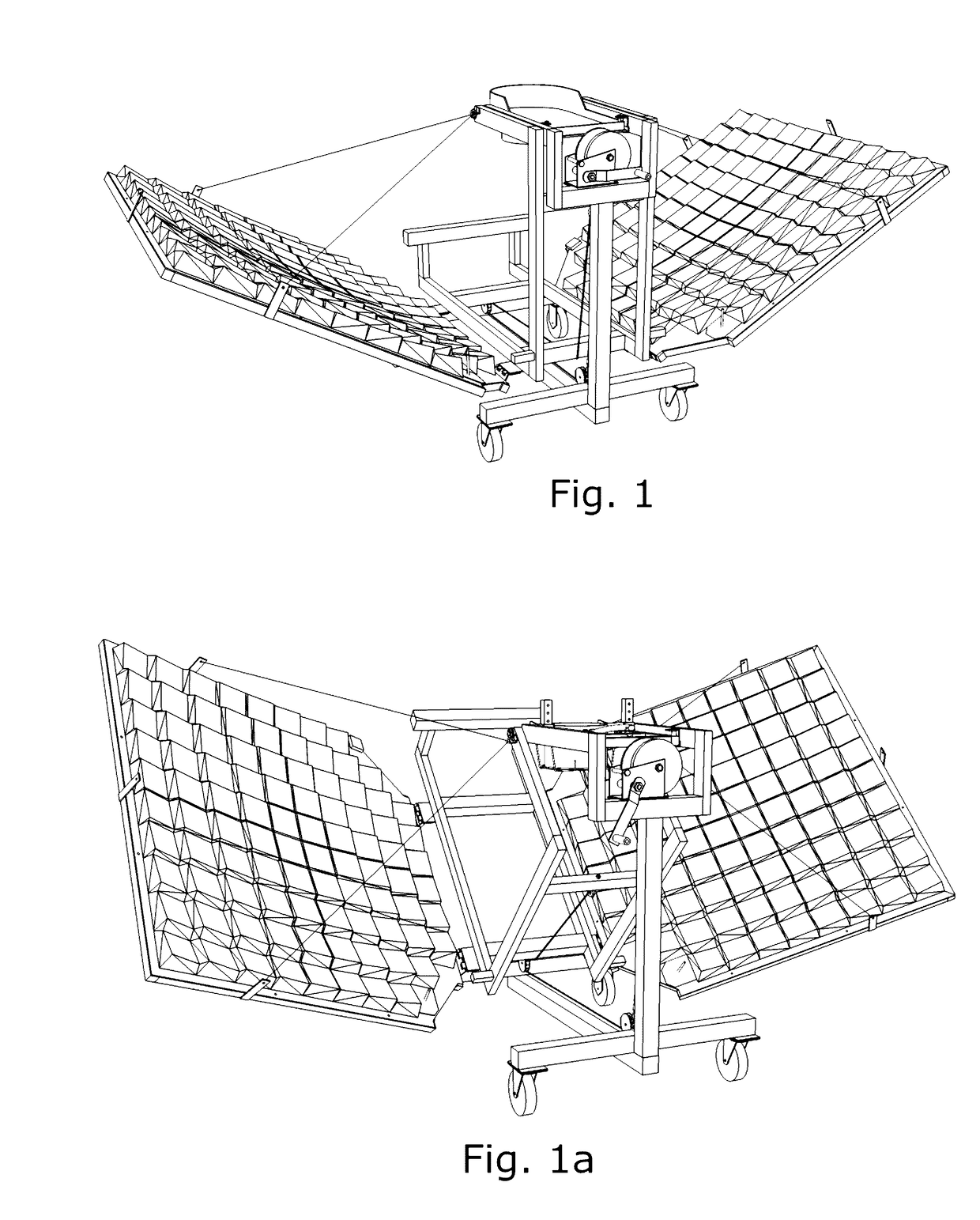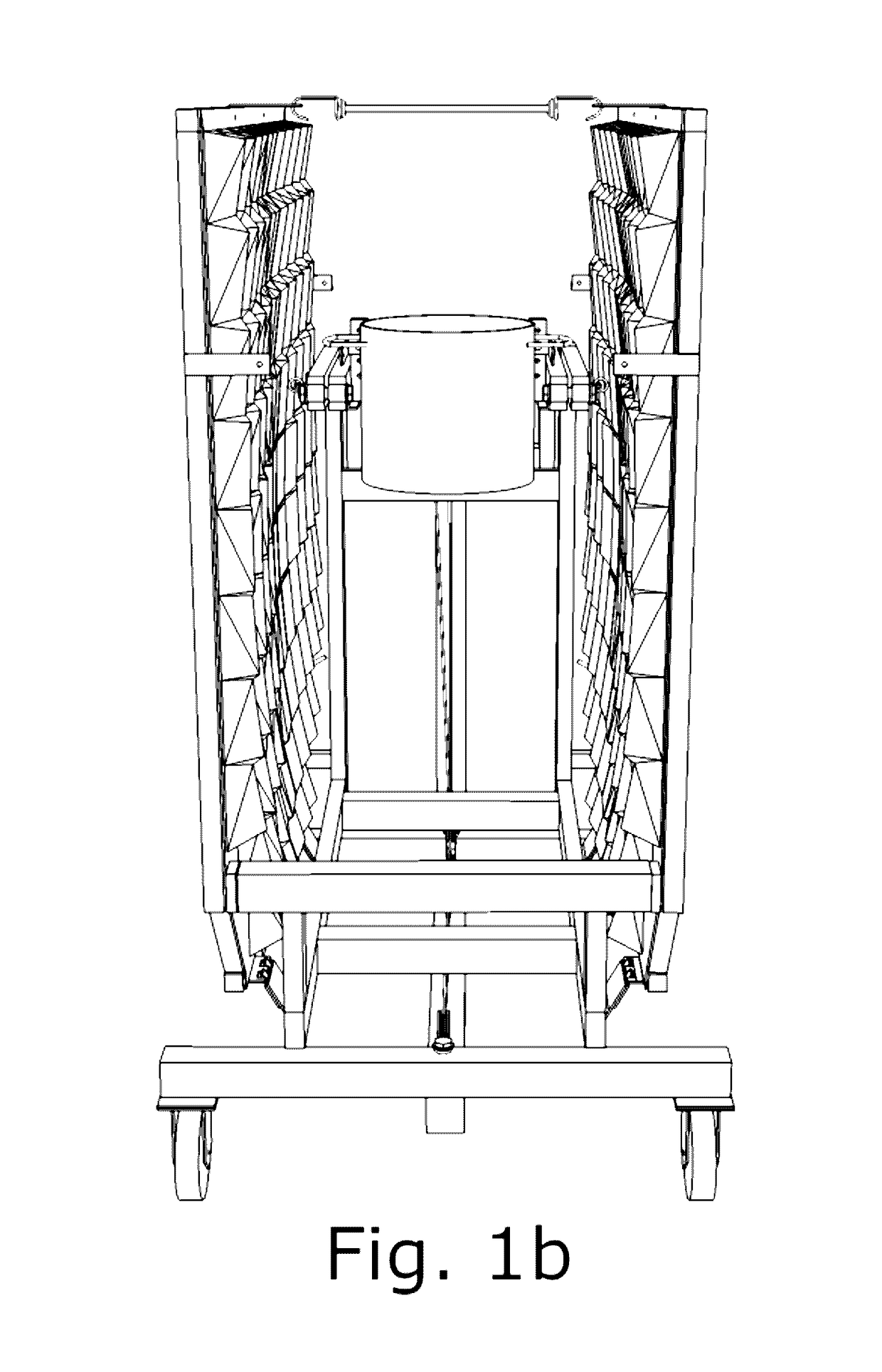Concentrating solar collector and pre-formed fresnel array reflector panel
a solar collector and reflector panel technology, applied in the field of concentrated solar collectors and pre-formed fresnel array reflector panels, can solve the problems of limited success, low photovoltaic conversion efficiency, and many less-developed areas of the world have seen significant deforestation and environmental degradation, and achieves easy, manual operation, and eliminates the effect of heavy backing structur
- Summary
- Abstract
- Description
- Claims
- Application Information
AI Technical Summary
Benefits of technology
Problems solved by technology
Method used
Image
Examples
example embodiments
Features of Example Embodiments
[0038]What follows describes two exemplary embodiments of the solar collector (see FIG. 1, FIG. 2b), with some parts and aspects of the invention directed toward those embodiments, for use as a solar cooker. Many uses other than cooking are possible; but cooking is likely to be the most common use.
[0039]The flattop receiver can be used as a griddle to fry food directly upon its top surface, or used with flat-bottomed cooking vessels resting on it, similar to a smooth-top stove. Concentrating reflector support panels are shown In open, operating position (see FIG. 1, FIG. 1a). The reflector carriage and reflector support panels are also shown positioned for storage (see FIG. 1b). The main frame is shown with a rolling chassis (see FIG. 2), so that the apparatus is easily moved over a firm, smooth surface, and also shown installed to a fixed-location pivot (see FIG. 2b). There Is a novel cable system for convenient manual altitude adjustment of reflector...
PUM
| Property | Measurement | Unit |
|---|---|---|
| concentration | aaaaa | aaaaa |
| length | aaaaa | aaaaa |
| strength | aaaaa | aaaaa |
Abstract
Description
Claims
Application Information
 Login to View More
Login to View More - R&D
- Intellectual Property
- Life Sciences
- Materials
- Tech Scout
- Unparalleled Data Quality
- Higher Quality Content
- 60% Fewer Hallucinations
Browse by: Latest US Patents, China's latest patents, Technical Efficacy Thesaurus, Application Domain, Technology Topic, Popular Technical Reports.
© 2025 PatSnap. All rights reserved.Legal|Privacy policy|Modern Slavery Act Transparency Statement|Sitemap|About US| Contact US: help@patsnap.com



